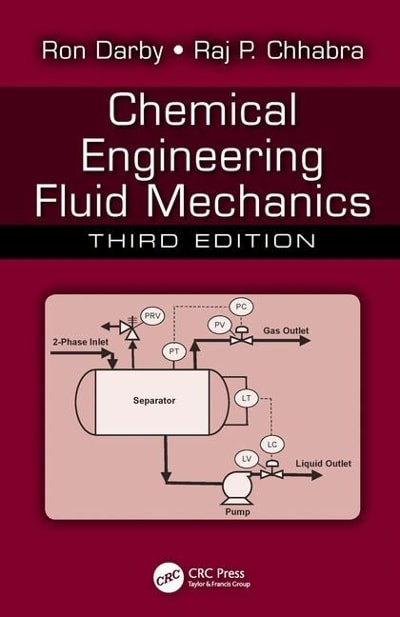A pipeline has been proposed to transport a coal slurry 1200 miles from Wyoming to Texas, at
Question:
A pipeline has been proposed to transport a coal slurry 1200 miles from Wyoming to Texas, at a rate of 50 million tons/year, through a 36 in. diameter pipeline. The coal slurry has the properties of a Bingham plastic, with a yield stress of $150 \mathrm{dyn} / \mathrm{cm}^{2}$, a limiting viscosity of $40 \mathrm{cP}$, and a SG of 1.5. You must conduct a lab experiment in which the measured pressure gradient can be used to determine the total pressure drop in the pipeline.
(a) Perform a dimensional analysis of the system to determine an appropriate set of dimensionless groups to use (you may neglect the effect of wall roughness for this fluid).
(b) For the lab test fluid, you have available a sample of the above coal slurry and three different muds with the following properties:
| Yield Stress $\left(\mathbf{d y n} / \mathbf{c m}^{\mathbf{2}}\right)$ | Limiting Viscosity $(\mathbf{c P})$ | Density $\left(\mathbf{g} / \mathbf{c m}^{\mathbf{3}}\right)$ | |
|---|---|---|---|
| Mud 1 | 50 | 80 | 1.8 |
| Mud 2 | 100 | 20 | 1.2 |
| Mud 3 | 250 | 10 | 1.4 |
Which of these would be the best to use in the lab, and why?
(c) What size pipe and what flow rate (in $\mathrm{lb}_{\mathrm{m}} / \mathrm{min}$ ) should you use in the lab?
(d) If the measured pressure gradient in the lab is $0.016 \mathrm{psi} / \mathrm{ft}$, what is the total pressure drop in the pipeline?
Step by Step Answer:

Chemical Engineering Fluid Mechanics
ISBN: 9781498724432
3rd Edition
Authors: Ron Darby, Raj P Chhabra





